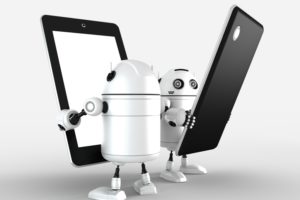One of the most discussed topics in Artificial Intelligence (AI) is Reinforcement Learning. It has the ability to transform many businesses. In this article, you can find a simple guide that describes the practice of reinforcement with some practical examples.
What is Reinforcement Training?
Positive behavior or activity at the center of reinforcement is assumed to strengthen the positive prize. When the previous wider footfall, machines and software agents use reinforcement learning algorithms to determine the right behavior based on the feedback from the environment, they would like to learn how to take steps based on the results they have taken to take a small step. It is a machine learning from and therefore a division of artificial intelligence.
Depending on the complexity of the problem, the reinforcement learning algorithms are in accordance with the ecosystem over time, if necessary to maximize long-term rewards. So, as teetering toddler learns to walk the reinforcement practice, a robot seeks in different ways to achieve the goal, those ways to get feedback about the successful and adjust up to the goal to walk.
A big step will make the robot falling forward, so it will adjust its step to make it look smaller if it’s the secret of staying upright. It will continue its practice through different variations and can eventually walk. In this example, when rewarding, the gift is straight. The robot receives its reaction based on a response, and the right actions will be strengthened. Substantial learning requires a lot of data since the first applications for the technology are simplified data such as gameplay and simulation data like robotics.
Practical Examples of Reinforcement Practice:
Although we are still in the early stages of reinforcement, there are many applications and products that depend on technology. Institutions have started to implement reinforcement practice for issues that require a fixed decision making and reinforcement practice supports human professionals or automates the decisive process. Here are a few:
1. Robotics:
Reinforcement learning gives robotics a “framework and a set of tools” for hard-to-engineer behaviors. Since reinforcement learning can happen without supervision, this could help robotics grow exponentially.
2. Industrial automation:
Thanks to the reinforcement learning capabilities from DeepMind, Google was able to reduce energy consumption in its data centers dramatically. Bonsai, recently acquired by Microsoft, offers a reinforcement learning solution to automate and “build intelligence into complex and dynamic systems” in energy, HVAC, manufacturing, automotive and supply chains.
3. Enhance predictive maintenance:
Machine learning has been used in manufacturing for some time, but reinforcement learning would make predictive maintenance even better than it is today.
4. Game playing:
Indeed, the first application in which reinforcement learning gained notoriety was when AlphaGo, a machine learning algorithm, won against one of the world’s best human players in the game Go. Now reinforcement learning is used to compete in all kinds of games.
5. Medicine:
Reinforcement learning is ideally suited to figuring out optimal treatments for health conditions and drug therapies. It has also been used in clinical trials as well as for other applications in healthcare.
6. Dialog systems:
Since companies receive a lot of abstract text in the form of customer inquiries, contracts, chatbots and more, solutions that use reinforcement learning for text summaries are highly coveted. Inherent in these tools is they get better over time.
7. Personalization:
Whether it’s the media you consume, the advertising that’s targeted to you or the goods you should purchase next on Amazon, there are reinforcement learning algorithms at play behind the scenes to create a stellar customer experience.
8. Autonomous vehicles:
Most autonomous cars, trucks, drones, and ships have reinforcement algorithms at the center. Wayve, a UK company, designed an autonomous vehicle that learned to drive in 20 minutes with the help of reinforcement learning.
Since important data sets require reinforcement learning, more companies are capable of leveraging learning when more companies buy more data. And, as the value of reinforcement continues to increase, companies in resources continue to identify the best ways to implement technology in their operations, services, and products.




